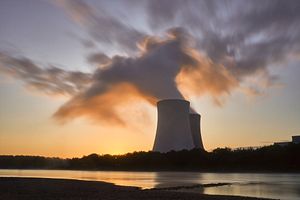Earlier this month, the International Atomic Energy Agency (IAEA)’s new low enriched uranium (LEU) bank in Kazakhstan become officially operational. On October 17, the IAEA owned facility located in Ust-Kamenogorsk (Oskemen) in eastern Kazakhstan took delivery of its first shipment of LEU. The bank’s purpose is to provide assurance of supply for countries operating nuclear power plants; the overarching aim is part of the IAEA’s nonproliferation agenda.
In 2009, then-head of the IAEA Mohamed ElBaradei called for the establishment of a nuclear fuel bank. Speaking at a nonproliferation conference in Washington, D.C., ElBaradei framed the concept of the bank as promoting the peaceful use of nuclear power without generating avenues for nuclear weapons development. The same facilities that enrich fuel can also be used to enrich material for weapons. What the bank does is provide a backstop for the commercial market.
In late 2010, the IAEA Board of Governors decided to establish the LEU bank but the process from decision to operational capacity has been long. IAEA Acting Director General Cornel Feruta said this month, “It is the first time the Agency has undertaken a project of this legal, operational and logistical complexity.”
According to the IAEA, the bank required negotiating legal frameworks with Kazakhstan and the bank’s operator, Ulba Metallurgical Plant (UMP); designing and building the storage facility; enhancing Kazakhstan’s legal and regulatory frameworks; concluding transit agreements with China and Russia, as well as contracts with Kazakhstan’s KTZ Express JSC (a transport and logistics company), and Russia’s TENEX JSC (a division of Rosatom, supplying nuclear fuel cycle products).
The LEU bank’s first shipment took more than four weeks to arrive from France’s Orano Cycle. The shipment, 32 cylinders of LEU — “typically sufficient for one re-load of fuel for a light-water reactor,” according to the IAEA — was transported via truck to an unnamed French port, shipped to Russia and then taken by train to Kazakhstan. The bank’s second shipment is expected to arrive from Kazakhstan’s Kazatomprom by the end of the year. The bank is designed to be a physical reserve of up to 90 metric tons of LEU.
The LEU bank was funded by voluntary contributions from IAEA members and donors to the tune of $150 million, expected to cover the costs of operation for 20 years. The donors include the Nuclear Threat Initiative (NTI), the United States, the European Union, the United Arab Emirates, Kuwait, Norway, and Kazakhstan.
Russia hosts a similar reserve bank in Angarsk. In operation since 2010, the Russian LEU bank is entirely owned by Russia, but is operated under the IAEA. The bank in Kazakhstan, however, is owned and operated by the IAEA itself.
The Kazakh facility was inaugurated in 2017, and in 2018 the IAEA signed purchase contracts to supply the bank.
According to the IAEA, there are about 450 nuclear power reactors in operation around the world and 52 are under construction. At present, nuclear power supplies about 10 percent of the world’s electricity. The bank’s purpose is to act as a backstop: If a country experiences a supply disruption and is unable to obtain fuel from the commercial market, it can tap into the bank. The intention is that confidence of supply will encourage countries not to develop their own enrichment facilities, which can be converted to supply fuel for nuclear weapons.
Kazakhstan holds a unique position in the nonproliferation community — as both a victim of nuclear tests and the former host of nuclear weapons. The Soviet Union conducted more than 450 nuclear tests in Kazakhstan at Semipalatinsk; the region’s people continue to deal with the lasting impact of those tests. After the collapse of the Soviet Union, Kazakhstan was left with a sizable arsenal of nuclear weapons — the world’s fourth largest at the time — which it voluntarily gave up in the 1990s.
Kazakhstan is also the world’s top producer of uranium, generating 41 percent of the world’s supply from mines as of 2018.
































